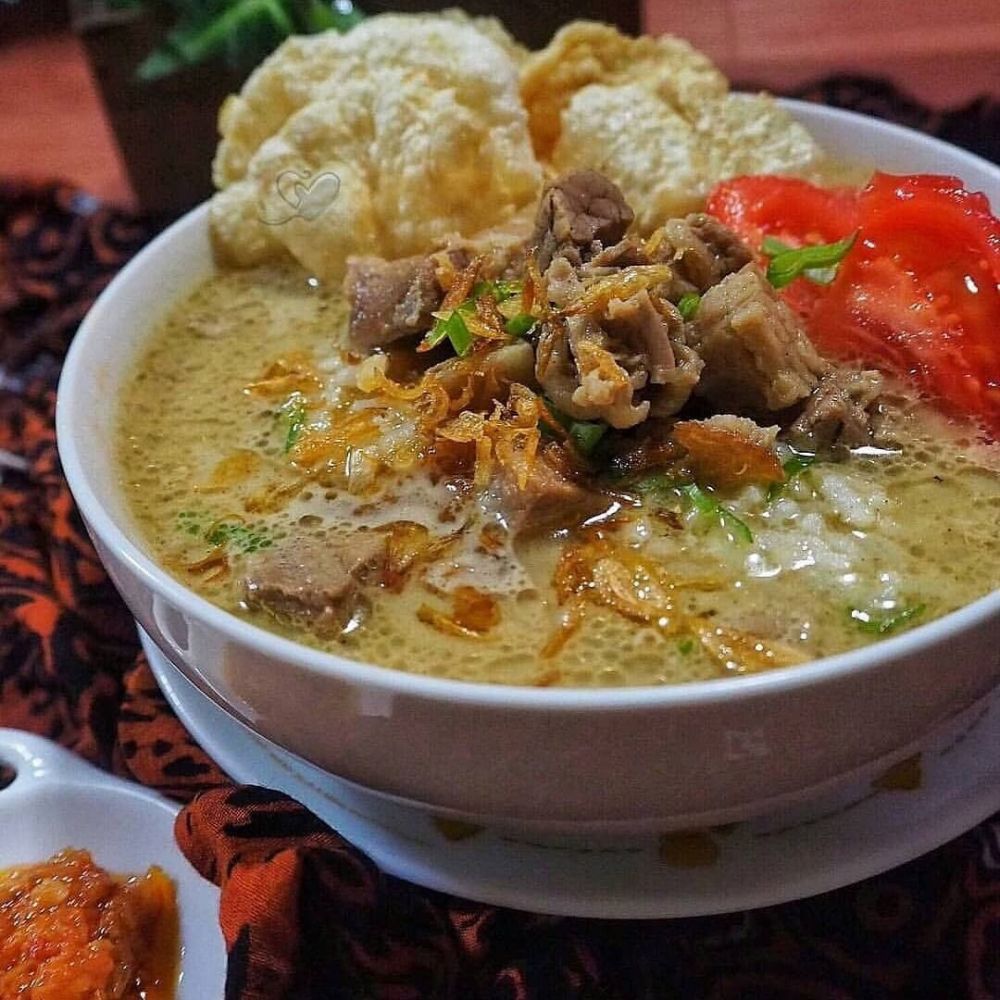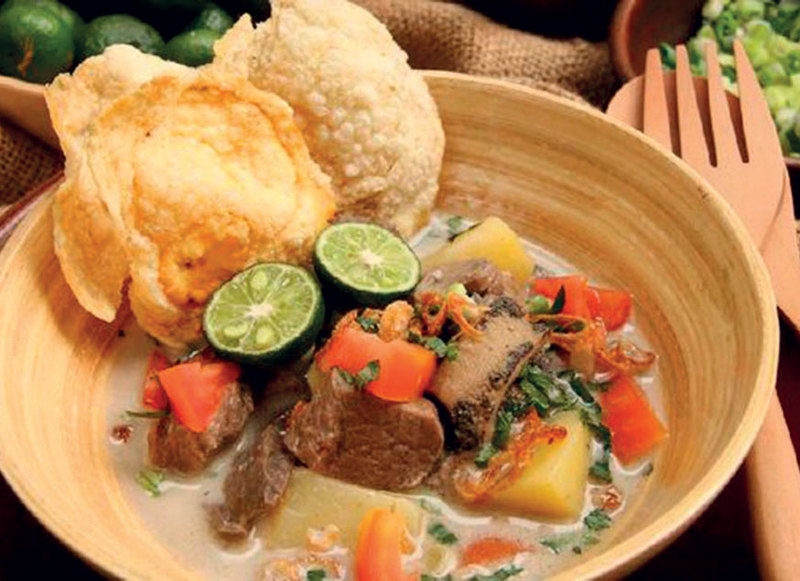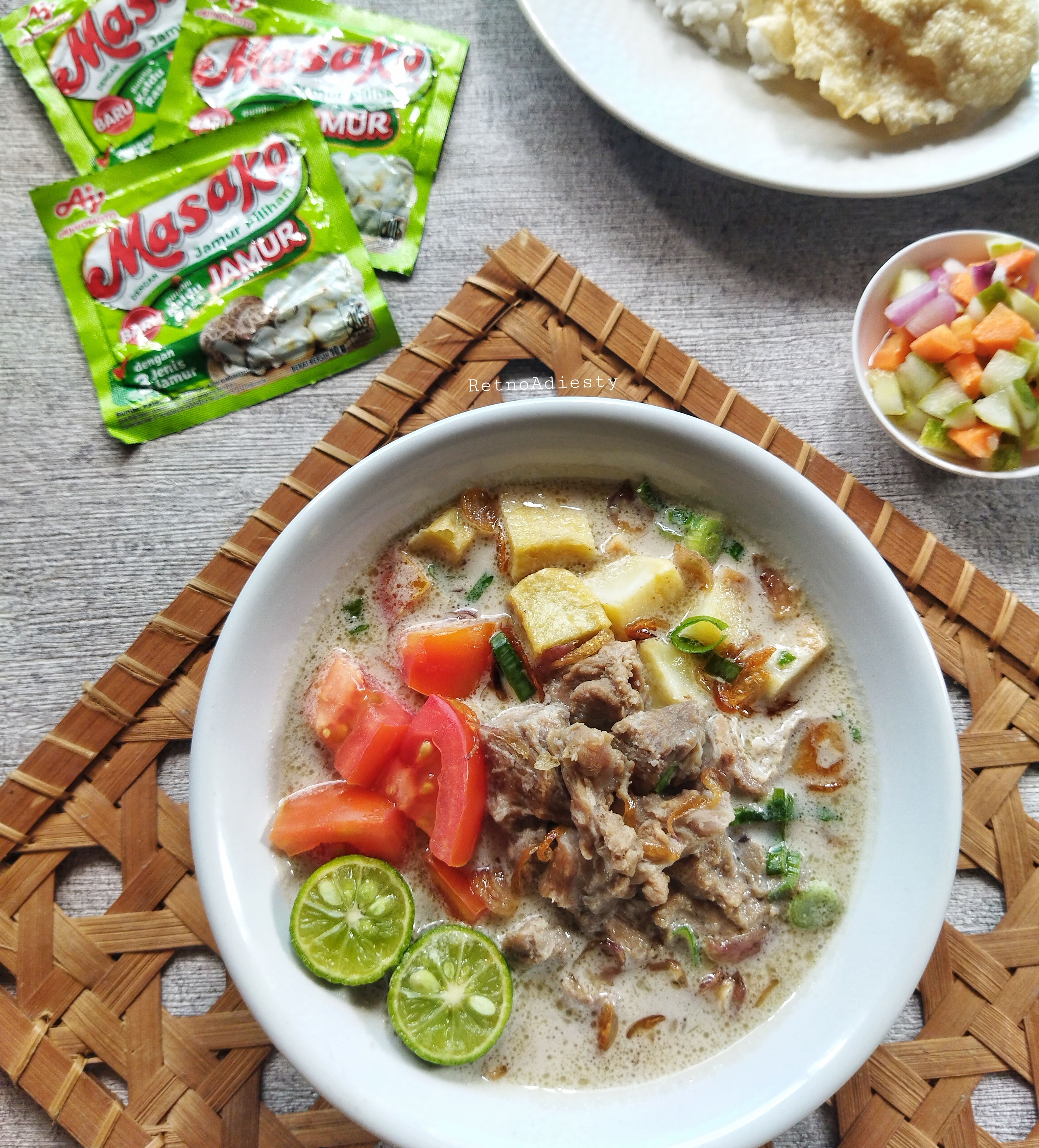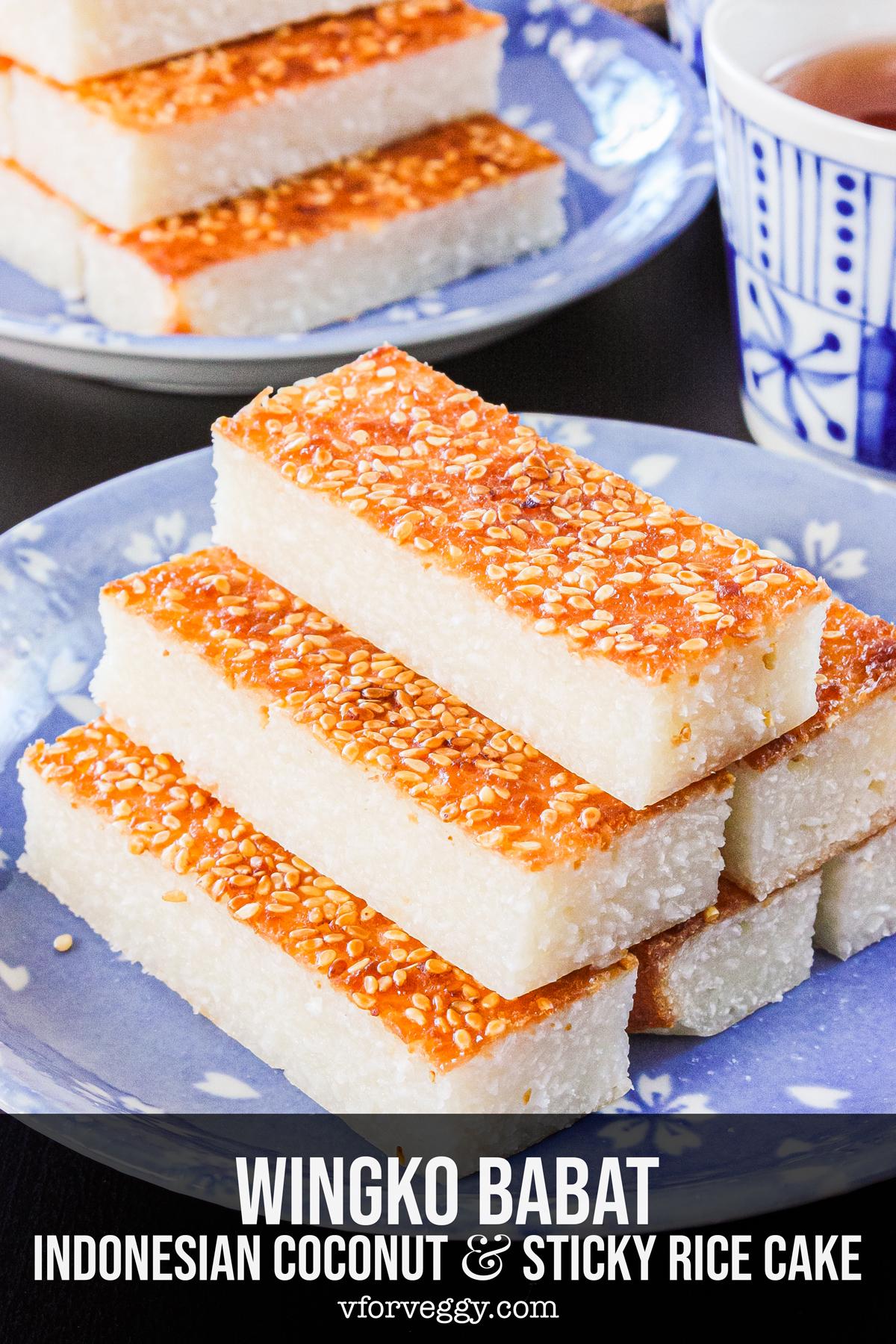
A Bowl of History: The Rich, Creamy, and Unforgettable Soto Betawi
In the sprawling, chaotic, and endlessly vibrant metropolis of Jakarta, the air is thick with a symphony of sounds and smells. Amidst the roar of motorcycles and the chatter of millions, a particular aroma often cuts through the urban haze: a rich, fragrant steam carrying notes of lemongrass, galangal, and a deep, savory beefiness, all enveloped in a creamy, luxurious warmth. This is the scent of Soto Betawi, a dish that is not merely a soup but a liquid chronicle of Jakarta’s history and a culinary icon for its people.
To understand Soto Betawi is to understand the city from which it hails. It is a dish born from a melting pot, a testament to centuries of cultural exchange in the port city once known as Batavia. More than just a meal, it is a comfort food, a breakfast staple, a festive dish, and a powerful symbol of Betawi identity.

The Anatomy of a Perfect Bowl
At its core, Soto Betawi is a beef soup, but this simple description does it a profound disservice. What sets it apart from the hundreds of other soto (traditional Indonesian soup) varieties found across the archipelago is its distinctive broth. Unlike the clear, turmeric-infused broths of Soto Ayam Lamongan or the dark, nutty rawon broth of East Java, the broth of Soto Betawi is opulently thick, creamy, and opaque.
This signature creaminess is traditionally achieved through one of two key ingredients, a topic of delicious debate among purists: santan (coconut milk) or susu (fresh milk). The classic, original style relies on coconut milk, which imparts a subtle sweetness and a rich, tropical fragrance. However, a popular 20th-century innovation introduced fresh cow’s milk, sometimes combined with coconut milk, to create a broth that is equally creamy but arguably lighter and more savory. Many modern vendors now use a blend of both, seeking the perfect balance between the aromatic character of coconut and the smooth body of fresh milk. To this base, a dollop of minyak samin (ghee or clarified butter) is often added just before serving, releasing a final, intoxicating wave of nutty aroma that elevates the dish to another level.
Swimming in this luscious broth are the stars of the show: tender chunks of beef and, for the adventurous, a variety of jeroan (offal). While beef shank (sengkel) is a common choice for its flavourful meat and gelatinous texture, a true Soto Betawi experience often includes tripe (babat), lung (paru), intestines (usus), and other organ meats. These are meticulously cleaned and boiled for hours until they are meltingly tender, absorbing the complex flavours of the spice-infused broth. The inclusion of offal is a nod to the dish’s humble origins, a culinary tradition of using every part of the animal, ensuring nothing goes to waste. Some variations also include slices of boiled potato and ripe tomato, which add a soft texture and a hint of fresh acidity.
The final layer of complexity comes from the bumbu, the ground spice paste that forms the soup’s soul. A fragrant medley of shallots, garlic, galangal, lemongrass, candlenut, coriander, and cumin is sautéed until fragrant before being simmered into the broth, creating a flavour profile that is at once savory, aromatic, and deeply comforting.

A Symphony of Condiments
A bowl of Soto Betawi is never served alone. It arrives as a canvas, inviting the diner to become the artist. An essential array of pelengkap (condiments) is always presented alongside, allowing for a personalized culinary experience.
First and foremost is a plate of steamed rice, the perfect vessel to soak up the glorious broth. Then come the textures and counterpoints:
- Emping: These slightly bitter, crunchy crackers made from the melinjo nut are non-negotiable. Their distinct bitterness provides a brilliant contrast to the richness of the soup.

- Acar: A simple pickle of cucumber, carrot, and shallots in a vinegar-sugar solution. Its sharp acidity cuts through the creamy broth, cleansing the palate and preventing flavour fatigue.
- Bawang Goreng: Crispy fried shallots are generously sprinkled on top, adding a sweet, toasted aroma and a delightful crunch.
- Jeruk Limau: A small, fragrant lime is served on the side, ready to be squeezed over the soup for a burst of bright, citrusy freshness.
- Sambal: A fiery chili paste, essential for those who crave a spicy kick.
- Kecap Manis: A thick, sweet soy sauce can be drizzled in to add a touch of dark, caramel-like sweetness.

The ritual of assembling your perfect bite—a spoonful of rice, a piece of meat, a dip into the broth, topped with a piece of emping and a sliver of pickle—is an integral part of the Soto Betawi experience.
A Taste of Jakarta’s History
The story of Soto Betawi is the story of the Betawi people, the original inhabitants of Jakarta. Their culture is a unique creole blend, shaped by centuries of interaction with traders and settlers from across the globe. The dish itself is a perfect edible metaphor for this fusion.

- Indonesian/Malay Roots: The base concept of soto and the use of indigenous spices like lemongrass, galangal, and coconut milk are firmly rooted in the Malay Archipelago.
- Chinese Influence: The practice of using jeroan (offal) is strongly associated with Chinese culinary traditions, where thriftiness and the appreciation for different textures are highly valued.
- Arab and Indian Influence: The most defining foreign flavour in Soto Betawi is arguably the use of minyak samin (ghee). This, along with spices like cumin and coriander, points directly to the influence of Arab and Indian traders who settled in Batavia and intermarried with the local population.
- Dutch Influence: While less direct, the Dutch colonial presence popularised the consumption of beef and potatoes, ingredients that found their way into the local cuisine.
Interestingly, the name “Soto Betawi” is a relatively modern invention. For decades, vendors simply sold it as “soto.” According to culinary lore, the name was popularized in the late 1970s by a vendor named Lie Boen Po. To distinguish his creamy, offal-laden soup from other regional sotos, he labelled his stall “Soto Betawi,” proudly proclaiming its Jakartan heritage. The name stuck, and it has since become the official designation for this beloved dish.
More Than a Meal: A Cultural Institution
In Jakarta, Soto Betawi is ubiquitous. It is found in humble street-side stalls (kaki lima) where patrons sit on plastic stools, in bustling traditional markets, in family-run warungs that have been perfecting their recipe for generations, and even in the polished dining rooms of upscale hotels.
It is a dish for all times and all people. It is a hearty breakfast to start a long day, a satisfying lunch to escape the midday heat, and a comforting dinner on a rainy evening. It transcends social classes, enjoyed equally by office workers in crisp shirts and manual labourers taking a well-deserved break. Eating Soto Betawi is a communal act, a shared experience that binds Jakartans together.
The enduring legacy of Soto Betawi lies in its perfect balance. It is rich without being cloying, complex without being confusing, and traditional yet open to evolution. It is a warm, creamy embrace in a bowl, a taste of home for millions, and a delicious introduction to the soul of a city that is constantly in motion. For anyone wishing to understand Jakarta, a journey into a steaming, fragrant bowl of Soto Betawi is the perfect place to start. It’s more than just a soup; it’s a taste of history, culture, and the unforgettable spirit of Indonesia’s capital.

Article about Soto Betawi. pictures collections gallery
Article about Soto Betawi. is a nice pictures and stock photo for your computer desktop or your smartphone device (ipad, tablet, blackberry, iphone, and other device) and also for your personal use. Free available for desktop wallpaper or additional image collections for your all needs. And was uploaded by admit at date July 1, 2025. You can download it in your computer by clicking download button to save image... have nice day and have fun guys..
This 1 image in featured post from 0 Photos/images Gallery and awesome picture selections about Article about Soto Betawi. is available to download. "Download & Save" images/pictures/wallpapers now and this Is one of the post that listed in packed to Category is Foods directory, with image dimension/resolution size is 1000 × 1000 px and size image/picture file is 153 KB with original link post ID is : https://powae.pw/of-course-here-is-a-1200-word-article-about-soto-betawi/. Get download/save images in post and gallery, "download" images or "preview" it on a bigger image for spesification sample in Large size (full attachment size) here : [Download & View to Large size]. Just Simple way, in thumbnail or in Gallery. *Click images to view Large Size.We collect this wonderful image from online and choose one of the best for you. Pictures collection that posted here was carefully chosen and published by author after choosing the ones which are best among the others. So, ultimately we make it and here these list of best image for your inspiration and informational reason regarding the Article about Soto Betawi. as part of blogsite exclusive updates collection. So, take your time and find the best informations and pictures posted here that suitable with your needs and use it for your own collection and personal use. About Image information: Image has been submitted and You are able to give your opinion as evaluations to our web site value.
Don't forget to comment if you interest with this images, you can share this post to social media like as facebook, twitter, google+, pinterest, stumbleupon, and more. just click social media buttons for share this post Article about Soto Betawi. Now. :)
Thanks for your visit, I hope you happy come to opo wae, wis opo wae, and get what you're looking for. And hope sometimes you will come back again here. All you need to do is help us develop by discussing this Article about Soto Betawi. if you like it "leave your comment". have fun, Thank you.



